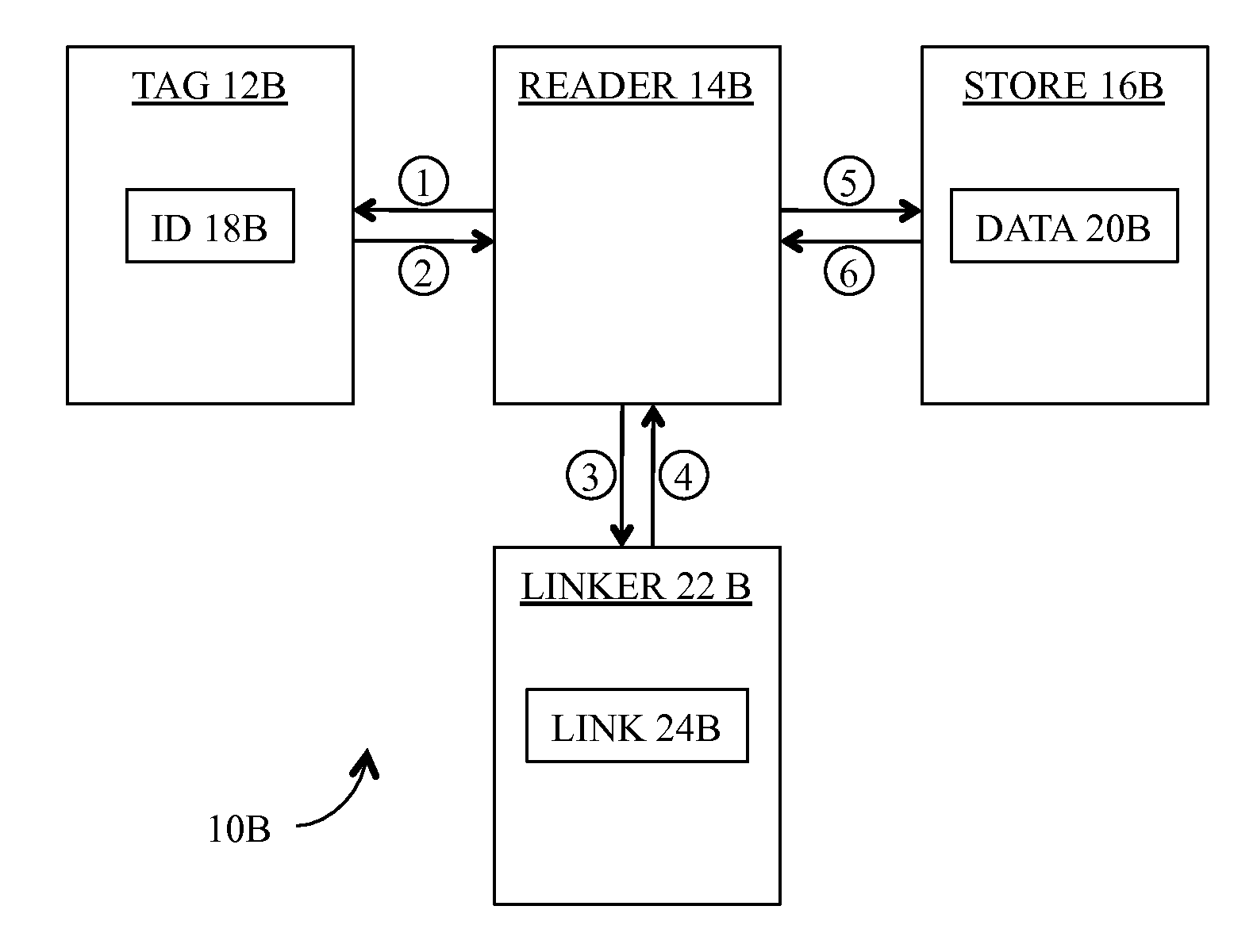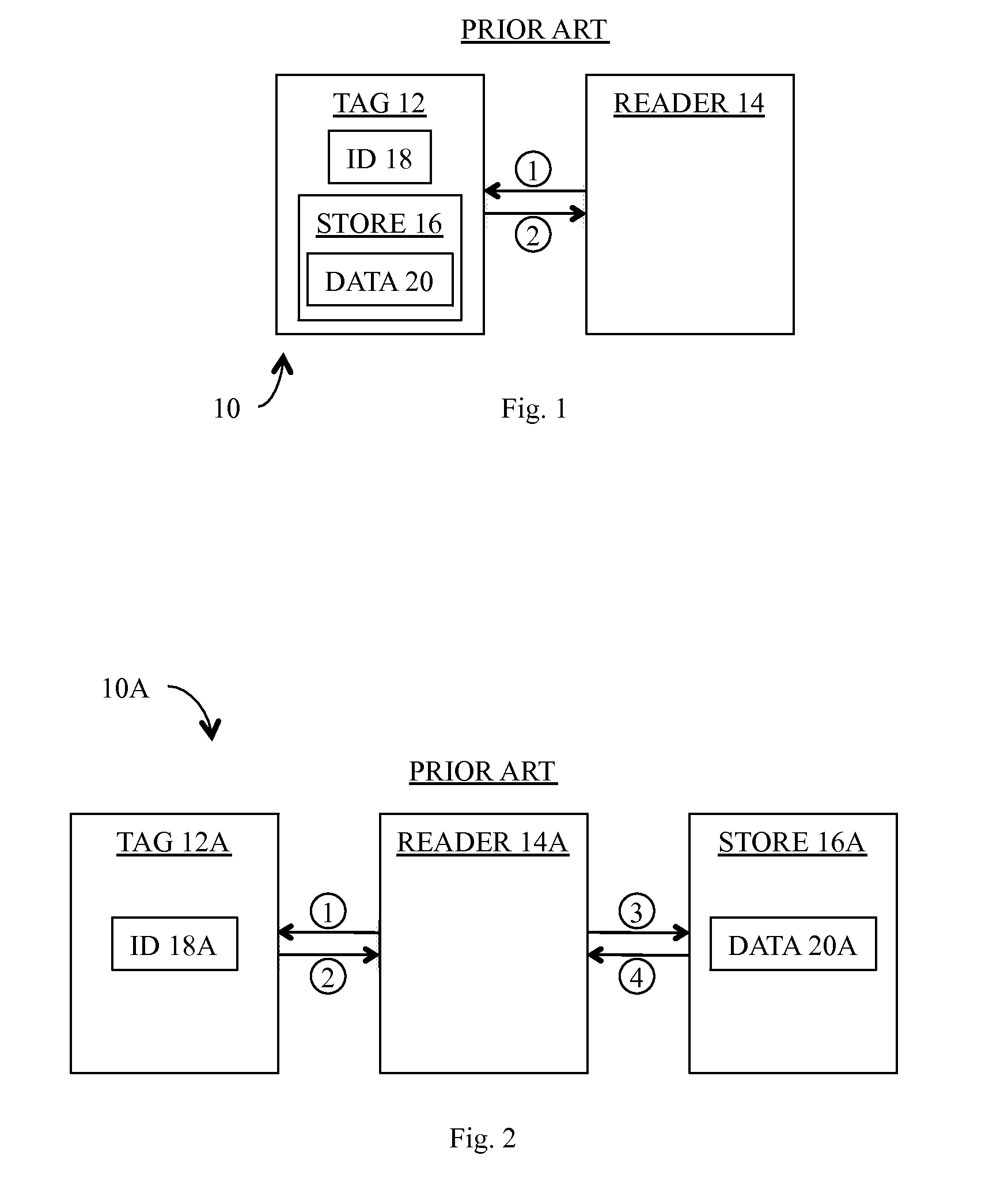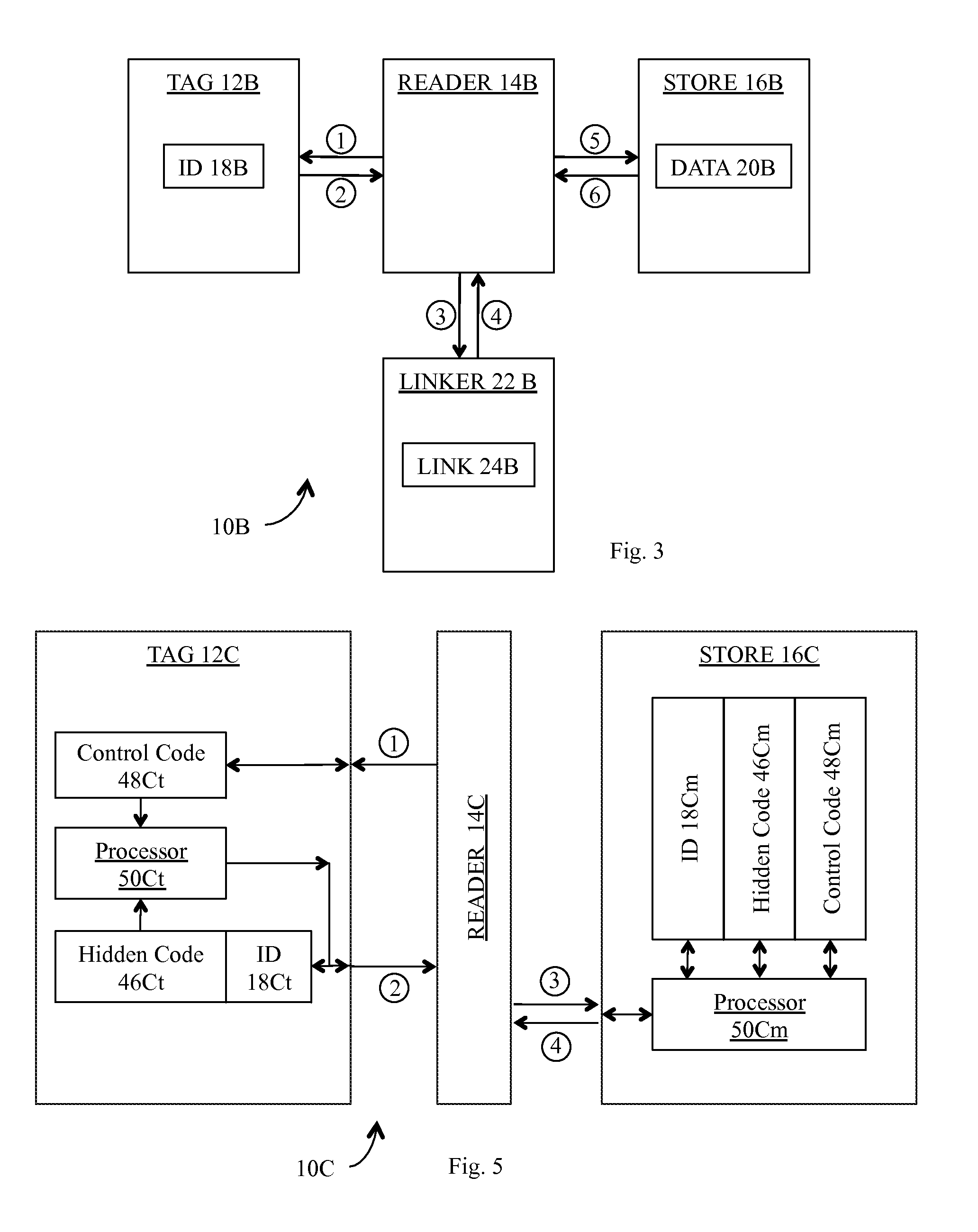Method and apparatus for authenticating RFID tags
a technology of radiofrequency identification and authentication method, applied in the field of radiofrequency identification system, can solve the problems of insufficient on-tag storage capacity to accommodate the continuously increasing data payload, complex distributed rfid database, and difficult to understand, so as to avoid unnecessary proliferation of numbers
- Summary
- Abstract
- Description
- Claims
- Application Information
AI Technical Summary
Benefits of technology
Problems solved by technology
Method used
Image
Examples
Embodiment Construction
[0035]In accordance with the preferred embodiment of our invention as shown in FIG. 3, our RFID system 10B includes tag 12B, reader 14B, store 16B, and a linker 22B. In general, reader 14B is adapted to interrogate tag 12B [illustrated in FIG. 3 as transaction 1], and to receive ID 18B provided by tag 12B [transaction 2] in response to that interrogation. Reader 14B is further adapted to selectively provide ID 18B to linker 22B [transaction 3], and to receive a link 24B from linker 22B [transaction 4]. Finally, reader 14B is adapted to selectively provide the link 24B to store 16B [transaction 5], and to receive a data object 20B from store 16B [transaction 6].
[0036]As shown in FIG. 4, our preferred method 26 for linking tag 12B to a data object 20B comprises the following steps:
[0037]Step 1: we store a unique ID 18B in tag 12B (step 28).
[0038]Step 2: we store links 24B, each associated with a selected unique ID 18B, in linker 22B (step 30).
[0039]Step 3: we store data objects 20B, e...
PUM
 Login to View More
Login to View More Abstract
Description
Claims
Application Information
 Login to View More
Login to View More - R&D
- Intellectual Property
- Life Sciences
- Materials
- Tech Scout
- Unparalleled Data Quality
- Higher Quality Content
- 60% Fewer Hallucinations
Browse by: Latest US Patents, China's latest patents, Technical Efficacy Thesaurus, Application Domain, Technology Topic, Popular Technical Reports.
© 2025 PatSnap. All rights reserved.Legal|Privacy policy|Modern Slavery Act Transparency Statement|Sitemap|About US| Contact US: help@patsnap.com



